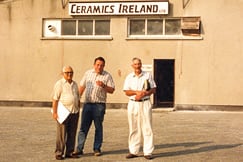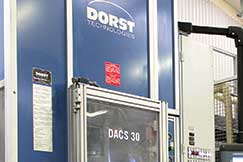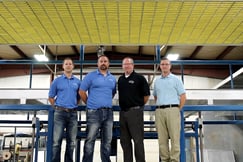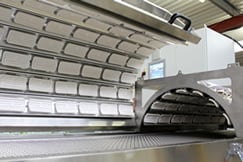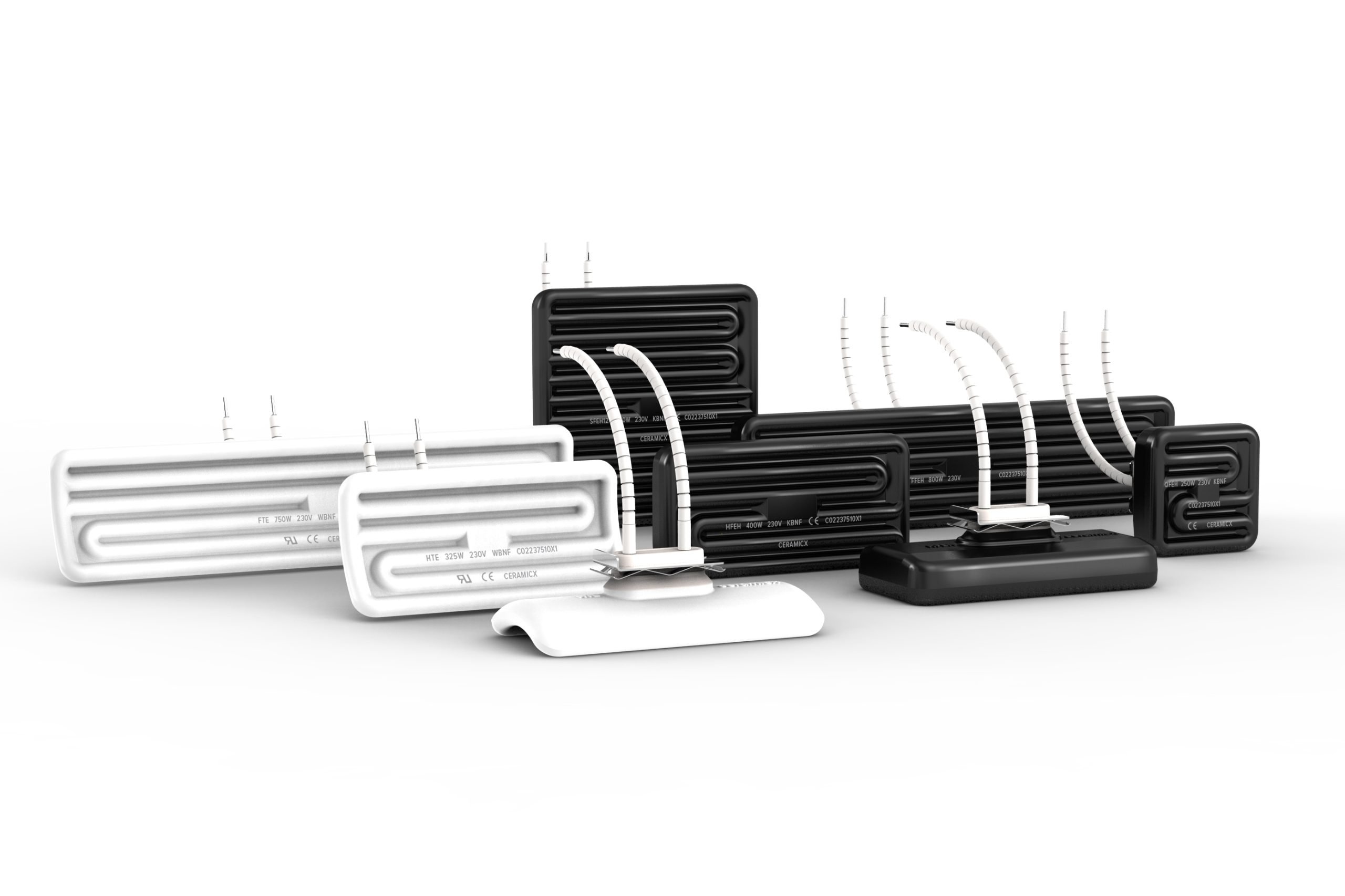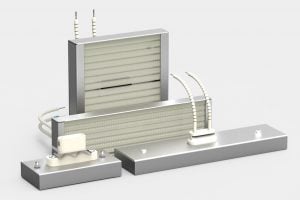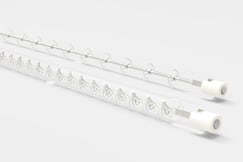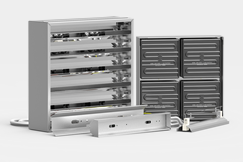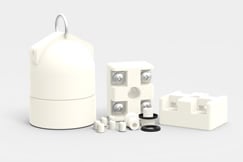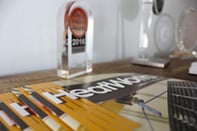| AUTHOR | DATE CREATED | VERSION | DOCUMENT NUMBER |
|---|---|---|---|
| Dr. Gerard McGranaghan | 27 March 2014 | V1.1 | CC11 – 00013 |
Introduction
This report describes a series of experiments on Quartz cassettes in which Stainless Steel and Aluminised steel reflector materials were compared. Tests were performed with reflectors and without reflectors.
| Test Number | Specimen number | Type | Power (W) | clean | Reflector |
|---|---|---|---|---|---|
| 1 | 1 | StSt | 800 | discoloured | Reflector |
| 2 | 2 | StSt | 800 | clean | Reflector |
| 3 | 3 | Al St | 800 | clean | Reflector |
| 4 | 1 | StSt | 800 | discoloured | no |
| 5 | 2 | StSt | 800 | clean | no |
| 6 | 3 | Al St | 800 | clean | no |
| 7 | 4 | Al St | 800 | clean | no |
Stainless steel bodies, while shiny at first, tend to discolour rapidly with temperature. In order to assess the effect of this discolouration, a brand new “clean” stainless steel element was tested for heat flux output. The results are shown in Figure 1. The element shows a return of 53.1% at 100mm, decreasing down to 17.0% at 500mm. After testing, the element had discoloured significantly.
In order to compare the emissive output of new “clean” elements against already discoloured elements, a second stainless steel element was soaked in a furnace at 400°C for 30 minutes. When removed, the element was a light straw oxide colour all over. However when subject to heating on the test rig, the surrounding areas continued to discolour rapidly and became similar to the first stainless steel specimen as seen in Figure 2 (2). The test results at 53.1% and 17.1% indicate no significant difference in performance between either element.
Therefore an 800W stainless steel element will discolour fairly rapidly from new and the difference in radiative emission between a brand new and an older discoloured element is negligible.
When an aluminised steel element was tested in the same setup, this performed better than either of the stainless steel elements. Figure 1 shows how the AS element returned 54.3% at 100mm and around 17.8% at 500mm. Compared to the stainless steel body, the increased output is probably as a result of the lower emissivity of the aluminised steel coating which leads to higher reflectivity and re-direction of rearward infrared energy to the target, but also its resistance to surface degradation at higher wattages (1000W). Figure 2 (1) shows the aluminised steel cassette after testing; this shows no surface degradation and with the exception of a few tell-tale signs, is almost indistinguishable from a new element.
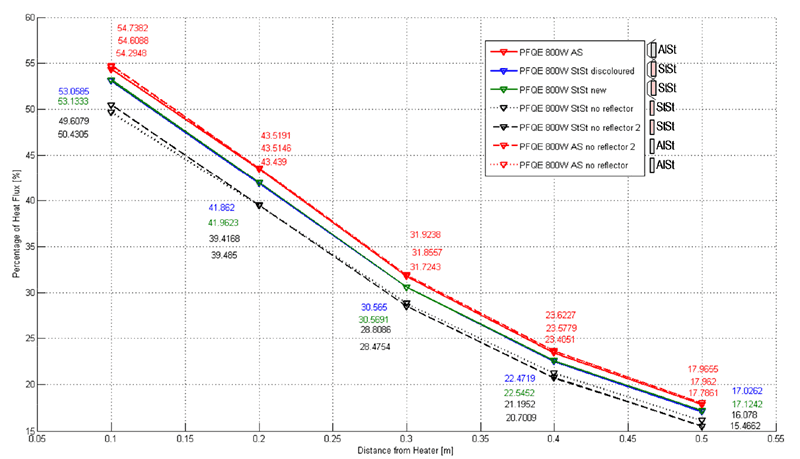
Next the reflector was removed and the same elements tested again. The results are shown in Figure 1. Two stainless steel elements were tested without the reflector and show an approximate 3 to 3.5% drop in performance at 100mm when compared to both “with reflector” cases. This proves that the body of the stainless element heats up to such an extent that discolouration occurs, and the subsequent change in surface emissivity leads to higher radiative losses from the rear of the stainless steel cassette. Therefore an additional reflector of some type is recommended when using stainless steel elements, especially at high powers or ambient temperatures where discolouration of the cassette body is more likely.
In contrast, the aluminised steel cassettes perform equally well with or without reflectors. This is seen in Figure 1 where the non-reflector aluminised steel cassettes both return around 54.7%. The AS cassette with reflector returned 54.3%, although 0.4% lower than the without reflector case this is still within experimental variations.
The aluminised steel cassette performs around 4-5% better than a stainless steel element without a reflector.
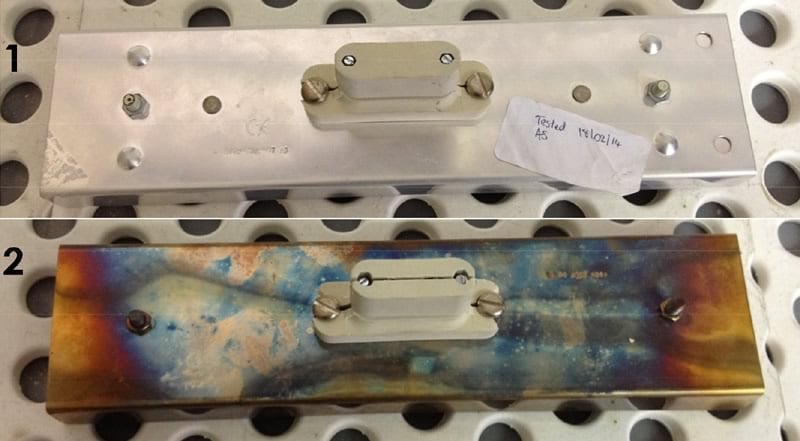
Summary
In FQE and PFQE elements, stainless steel bodies exposed to high temperatures will show surface degradation leading to a decrease in reflectance and an increase in rearward emissivity thus requiring an independent reflector to improve performance.
Aluminised steel bodies do not show the same degradation and as emissivity remains consistently high, these do not require a reflector.
Note
It must be explored if the loss in reflectivity of the stainless steel body is also found in lower wattage elements. In low power cassettes, the operating temperature may be significantly lower, therefore the stainless steel may not form oxides and discolour.
However, the formation of oxides is temperature driven, therefore a low wattage element operating within a closed oven at high ambient temperatures may experience such high temperatures and also begin to oxidise. From kiln tests, oxidisation of stainless steel begins to occur gradually from around 150°C onwards, becoming very dark from 550°C.
In certain environments if aluminised steel is used at temperatures above 500°C continuously, flaking of the aluminium can occur which will also cause degradation in performance. However, this does not occur in normal conditions. The Ceramicx Technical Report CCII-00014 describes the resistance of aluminium in more detail showing no surface deterioration until around 630°C.
Certain processes can lead to the reflector surface becoming contaminated again resulting in a decrease in performance. A clean reflector will perform at optimal levels.
These over-temperature issues can be avoided by careful temperature monitoring and regulation within the oven or on the temperature reflectors themselves.
Disclaimer
These test results should be carefully considered priorto a determination on which type of infrared emitter to use in a process. Repeated tests conducted by other companies may not achieve the same findings. There is a possibility of error in achieving the set-up conditions and variables that may alter the results include the brand of emitter employed, the efficiency of the emitter, the power supplied, the distance from the tested material to the emitter utilised and the environment. The locations at where the temperatures are measured may also differ and therefore affect the results.

